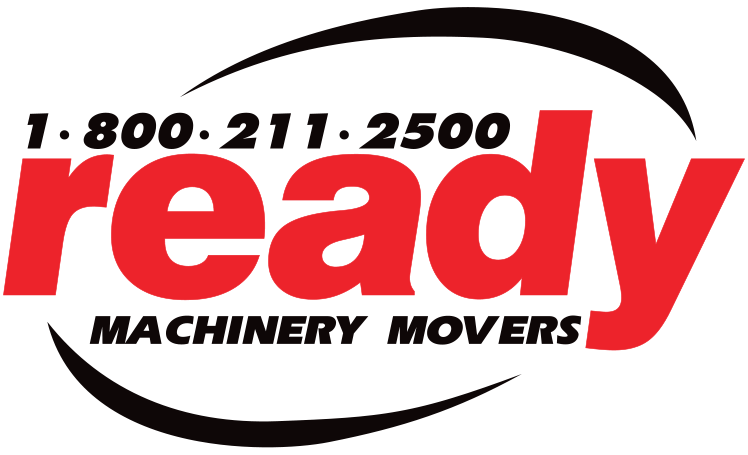
In factories, warehouses, shipyards, cargo ports, ship decks, and construction sites, machines hoist massive objects into the air and place them in precisely the correct position. In order to securely transport these heavy and complex objects, industrial rigging is essential.
In its early days, rigging described a man-powered system of ropes and pulleys that hoisted a ship’s sails. The term “rig” can be traced back to the late 15th- century Scandinavian word rigga, meaning “to bind or wrap up.” Since then, industrial rigging has freed humans from the need for back-breaking labour. The power of hydraulics and physics make it possible to move just about anything.
There are several important pieces of equipment involved in successful industrial rigging that help make something like a factory relocation smooth, successful, and safe. Below is a list of some rigging essentials, what they do, and how they do it.
Rigging Hooks:
Look at any crane on a construction site and you can’t miss the rigging hook at the bottom of the rope. These hooks are designed to lift heavy objects and eliminate slippage. Rigging hooks are made of forged alloy steel and come in a variety of sizes depending on the weight of the load being moved. There are also several types of hooks: sorting, eye, clevis grab, and choker. Each has a “throat opening” or “hook opening.”
Pulleys and Blocks:
This system (believed to have been used in ancient Mesopotamia as far back as 1500 BCE), simplifies the process of maneuvering heavy objects by reducing the amount of work needed to lift and move loads. The most common type of block used in heavy machinery lifting is called a “snatch block,” but “tilt-up” and “logging blocks” are also utilized. Wire rope is used with blocks, which are available in sizes to accommodate up to 30 tonnes. Pulley selection varies, based on rope, frames, and size of the sheave (the grooves on the wheels of the pulley).
Shackles:
Shackles are used for loads exceeding 6,000 lbs and are the primary connecting link in all manner of rigging systems. Shackles allow different rigging subsets to be connected or disconnected quickly. Think of the carabiner in mountain climbing equipment – that’s a type of shackle. They come in a variety of types such as the screw pin, bolt pin, round pin, and chain shackle.
Wire Ropes:
Wire ropes have multiple applications in the rigging system and must have the strength to lift several thousand tons. The most common wire ropes used for heavy industrial lifting are cables fortified by multiple strands of stainless steel or carbon steel wire and arranged in a helix pattern. These ropes can be coated, uncoated, or galvanized, and come in a variety of specifications, depending on the job load. For example, one with a diameter of 4.7 mm can lift 1,200 kg, while another with a diameter of 16.3 mm can lift 16,000 kg.

Lifting Slings:
Lifting slings come in a variety of materials: chain, wire, web, synthetic, and metal mesh. Each can be used to safely and efficiently lift, move, and position a load. To determine which of these materials will best suit the job, your heavy machinery and equipment moving specialist will need to determine:
- Weight of the object to be lifted
- Center of gravity
- Number of attachment points
- Hitch type
- Geometry of lift (including sling angles)
- Reach
- Clearance and size restrictions
- Upper and lower fitting requirements
Once these factors are taken into account, your moving specialist will select the correct sling for the job.
Sling hitch type:
Once a sling type has been decided, a rigger will also need to select the best sling hitch for the load being moved. The choices for this task are:
- Vertical Hitch – One end of the sling is attached to the hook, while the other end is attached directly to the load. When a sling is used in a vertical hitch, the full lifting capacity of the sling material can be utilized. It’s wise to use more than one sling in this case, as a single one can rotate or create a twist in the sling. This method would not be used for loose, long, or unbalanced loads.
- Choker Hitch – The sling goes around the load and then loops back through the eye, while the other end is placed on the hook. A block of wood can be added between the hitch and the load to improve the grip and angle of the choke. This type of hitch should not be used on loose bundles.
- Double-Wrap Choker Hitch – Full 360° contact around the load can be achieved using a double wrap choker hitch. This hitch compresses the load and can help prevent it from slipping out of the sling.
- Basket Hitch – The sling cradles the load while both eyes are attached overhead. More than one sling may be necessary to help ensure load control. This method should not be used for loads that are difficult to balance.
Eye Bolts and Steel Nuts:
It’s easy to overlook these smaller pieces of hardware and consider them less important, but without eye bolts and nuts (known as the adjustable hardware), the cables and wires couldn’t be kept in place. An eye bolt has a loop at one end and is secured to a structure. Cable or rope is then looped through the eye. Different types of straight and shoulder eye bolts are used, including:
- Nut
- Machinery
- screw
These bolts vary in size from ¼” to 2”. The dimensions chosen for these items are determined based on the load’s weight.
Rigging is an extremely complex operation and should be left to the professionals, as there are several steps and safety precautions involved for a successful job. Relocation experts have the expertise and training to prepare and complete the work — inspecting the equipment, calculating loads, determining the proper tools for the job, and doing everything as smoothly and efficiently as possible. Ontario, in particular, has specific regulations to guide riggers.
For big moves that require professional rigging, a heavy machinery mover and plant relocation expert can help. Ready Machinery Movers serves Ontario, Quebec, and the U.S.: Call 1-800-211-2500 to request a quote or use our contact form to send us an inquiry.
